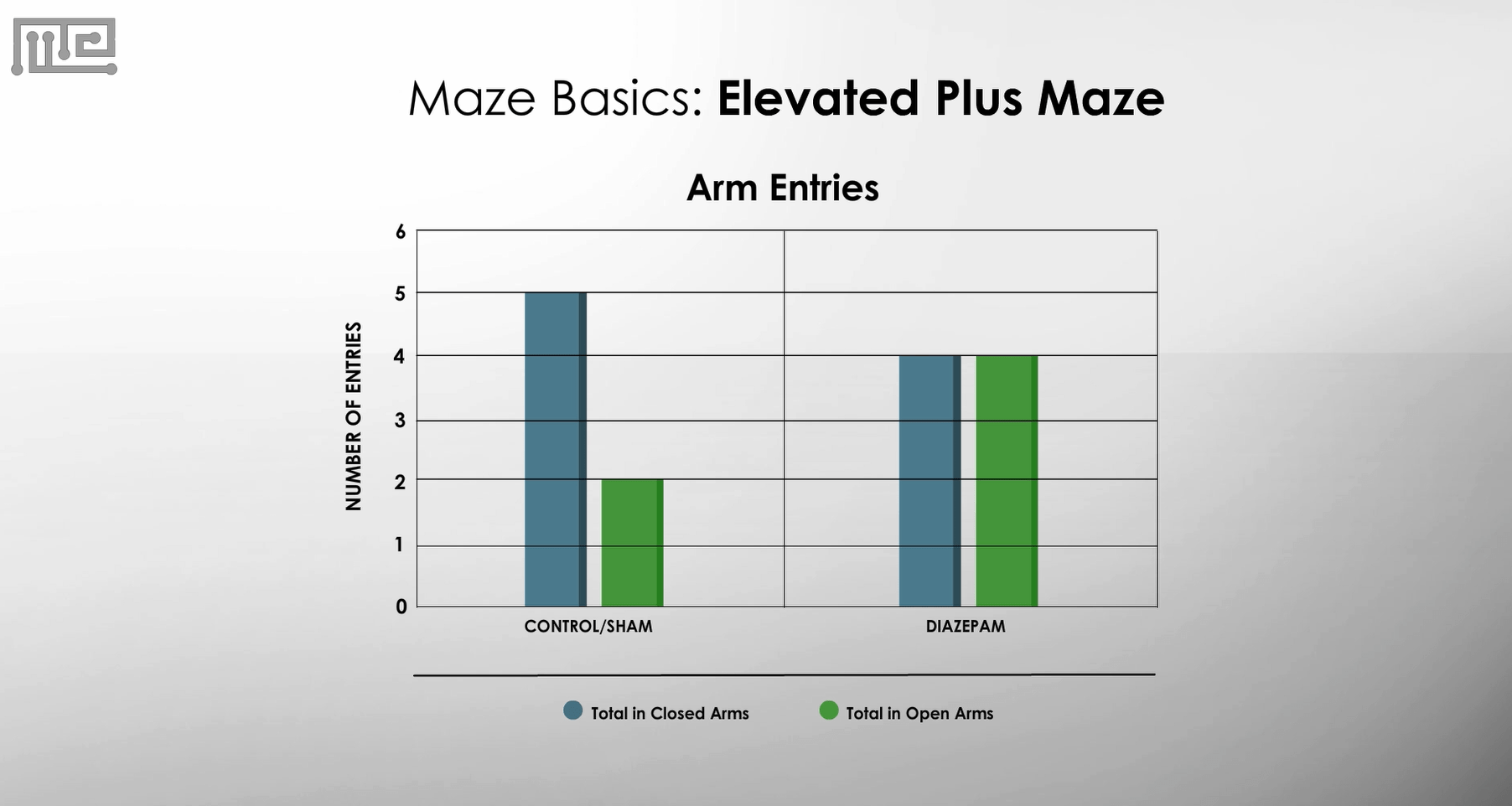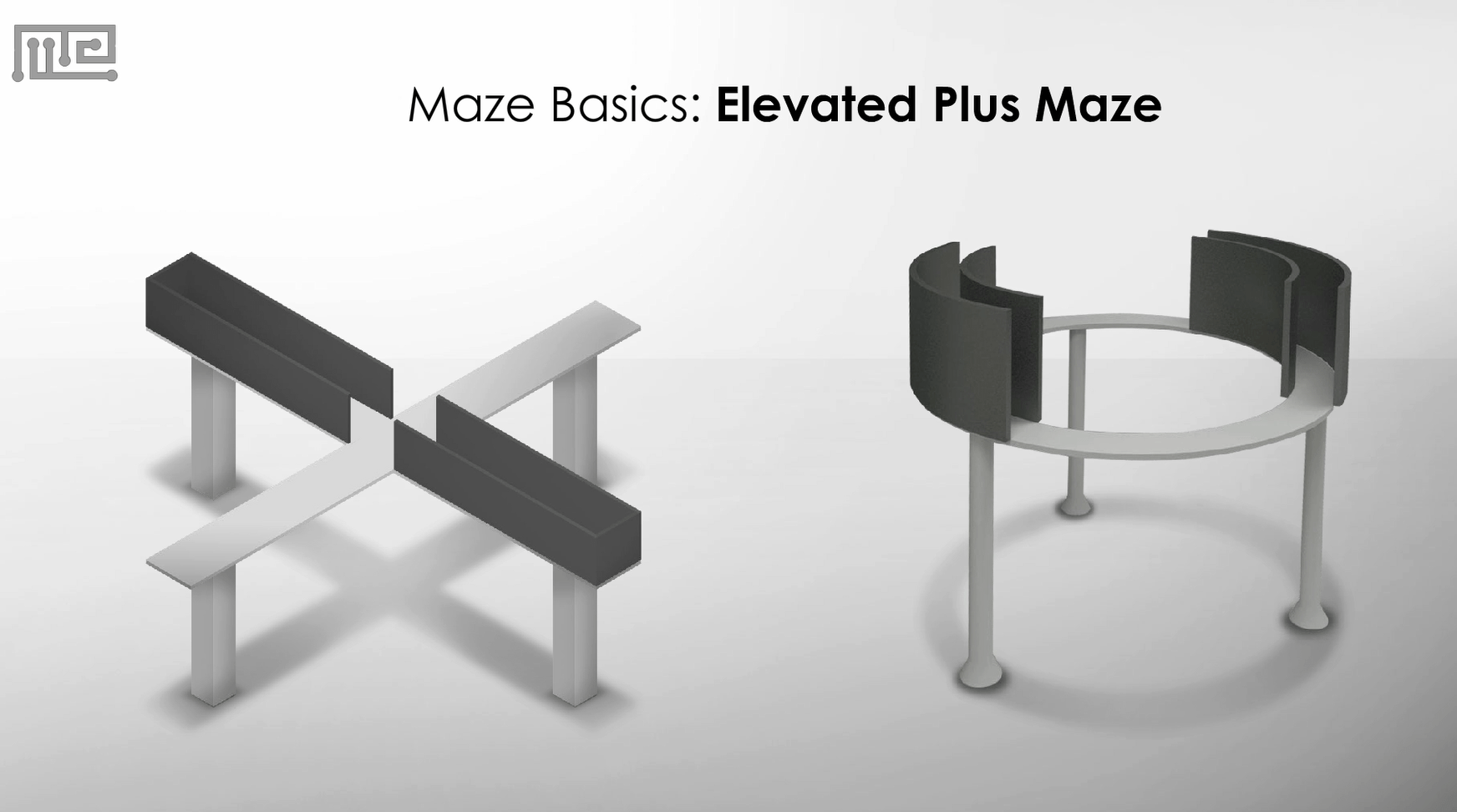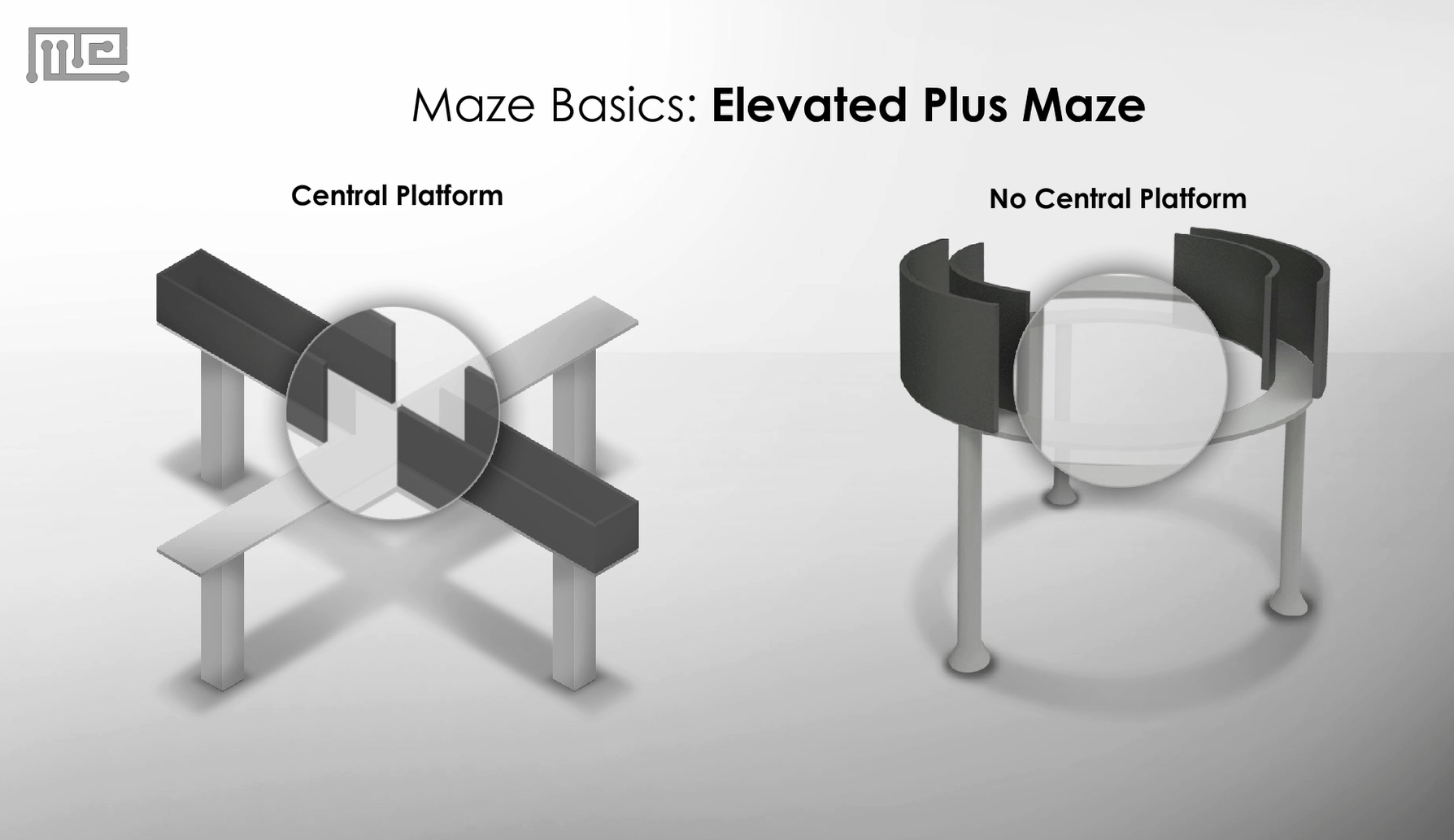Anxiety disorders are the most common mental illness in the United States, as it affects around 18% of the population. Not only is it prevalent, but it’s also very costly[1]. Therefore, it’s very important that we study anxiety and potential treatments.
What is the Elevated Plus Maze?
The elevated plus maze is perhaps the most common model of anxiety used in animal research. The apparatus is raised above the ground and consists of four arms arranged around a small central platform in a plus shape. Two opposite arms are enclosed with high walls while the other two arms remain open and exposed.
So how does this test anxiety? When the animal is placed on the center platform, it will choose one of the four arms to enter. Rodents are inherently wary of open and elevated areas, so they will have a natural aversion to the two open arms. One study has looked at what part of this maze causes anxiety. Through testing the behavior of rats with different heights and habituation, the researchers proposed that the open space, rather than the height or novelty, is the anxiety-inducing part of the maze[2].
Measuring and Understanding Anxiety
Anxiety is commonly measured as the number of entries into the open or closed arm, or the amount of time spent in each type of arm. It has been proposed that the number of enclosed arm entries can be used as a measure of locomotor activity since there shouldn’t be any anxiety entering the sheltered arms. Meanwhile, the percentage of entries and time in the open arms is a measure of anxiety[3]. An anxious animal will spend less time in the open arms and enter the open arms fewer times than the closed arms.
The most useful part of this maze is its ability to look at the effects of different drugs. Anxiolytics are drugs that reduce anxiety, whereas anxiogenics are drugs that induce anxiety. Anxiolytics, such as diazepam and amylobarbitone, increase the proportion of open arm entries. Anxiogenics, on the other hand, such as ACTH and picrotoxin decrease the proportion of open arm entries[4].
It is hypothesized that serotonin has a role in controlling anxiety. One study tried to show this by using the elevated plus maze. This study administered 5,7-dihydroxytryptamine to rats to lesion central serotonergic neurons. In other words, the drug decreased the amount of serotonergic innervation and serotonin levels. They found that the lesioned rats entered the open arms more often than the sham animals, suggesting that a lower level of serotonin leads to an anxiolytic effect[6].
Looking More Closely at the Elevated Plus Maze
Though it has been shown that benzodiazepines, such as diazepam, have clear anxiolytic effects in the elevated plus maze, this may be a phenomenon that is restricted to naïve rodents. For rats with previous experience with the maze, benzodiazepines are ineffective, but anxiogenics remain effective. File (1993) termed the phenomenon “one-trial tolerance”. As benzodiazepines were ineffective when tested 24 hours after the initial test, as well as 1 to 2 weeks after the initial test, this implicates a potential role of learning in this maze.5
There is also a difference between genders and ages on the performance of rats in the elevated plus maze. Imhof et. al. (1993) showed that when the rats were 60 days old, there were many more entries and time spent in the open arms. At 120 days, however, rats of both sexes showed a significant reduction in the number of entries and time spent in the open arms. At 90 days of age, male rats showed a switch in their performance on the maze; they switched from spending more time in the open arms to spending more time in the closed arms. This switch happened in females around 120 days[7]. This shows that there are differences in anxiety levels across sexes and ages of rats. Therefore, it’s important to consider the age, sex, and breed of the animal being tested when looking at a certain study or comparing across studies.
An interesting modification to the elevated plus maze apparatus is the fear-potentiated elevated plus maze. Fear is induced by inescapable stressful stimuli, such as through social defeat, shock, predator odor or presence, swim stress, etc. This is followed by testing on the elevated plus maze apparatus. Whereas the elevated plus maze takes advantage of natural aversion to open and elevated areas, this modification takes advantage of a “state anxiety”, or the unpleasant emotional arousal in the face of danger. Different types of stressors can cause different amplitudes of changes to the performance on the elevated plus maze apparatus, so this modification allows researchers to test different stressors and the effects of different types of drugs in response to the specific stress hit[8].
The main limitation of the elevated plus maze apparatus is the central platform. Time spent on the central platform can create ambiguity in terms of how that time is interpreted. The zero maze attempts to solve this problem. The zero maze is in the shape of a circle, or a zero, and has two opposite quarters of the circle enclosed by high walls, with the other half left open. The zero maze removes the central platform issue altogether and reduces any decision-making anxiety, as the rodent doesn’t have to choose which arm to turn into. Despite this, the elevated plus maze apparatus remains one of the most popular mazes in anxiety research due to its simplicity of testing and analysis.
References
- Anxiety and Depression Association of America. Facts & Statistics [Internet] [cited 2017 March 22]. Available from https://www.adaa.org/about-adaa/press-room/facts-statistics
- Treit D, Menard J, Royan C (1993). Anxiogenic stimuli in the elevated plus-maze. Pharmacology Biochemistry and Behavior. 44(2):463-469.
- Campos AC, Fogaca MV, Aguiar DC, Guimaraes FS (2013). Animal models of anxiety disorders and stress. Revista Brasileira de Psiquiatria. 35(Suppl. 2):S101-S111
- Handley SL, Mithani S (1984). Effects of alpha-adrenoceptor agonists and antagonists in a maze-explroation model of ‘fear’-motivated behavior. Naunyn-Schmiedeberg’s Archives of Pharmacology. 327(1):1-5.
- File S (1993). The interplay of learning and anxiety in the elevated plus-maze. Behavioral Brain Research. 58(1-2):199-202.
- Briley M, Chopin P, Moret C. Effect of serotonergic lesion on “anxious” behavior measured in the elevated plus-maze test in the rat. Psychopharmacology. 101(2):187-189.
- Imhof JT, Coelho ZMI, Schmitt ML, Morato GS, Carobrez AP. Influence of gender and age on performance of rats in the elevated plus maze apparatus. Behavioral Brain Research. 56(2):177-180.
- Korte SM, De Boer SF. A robust animal model of state anxiety: fear-potentiated behaviour in the elevated plus-maze. European Journal of Pharmacology. 463(1-3):163-175.



